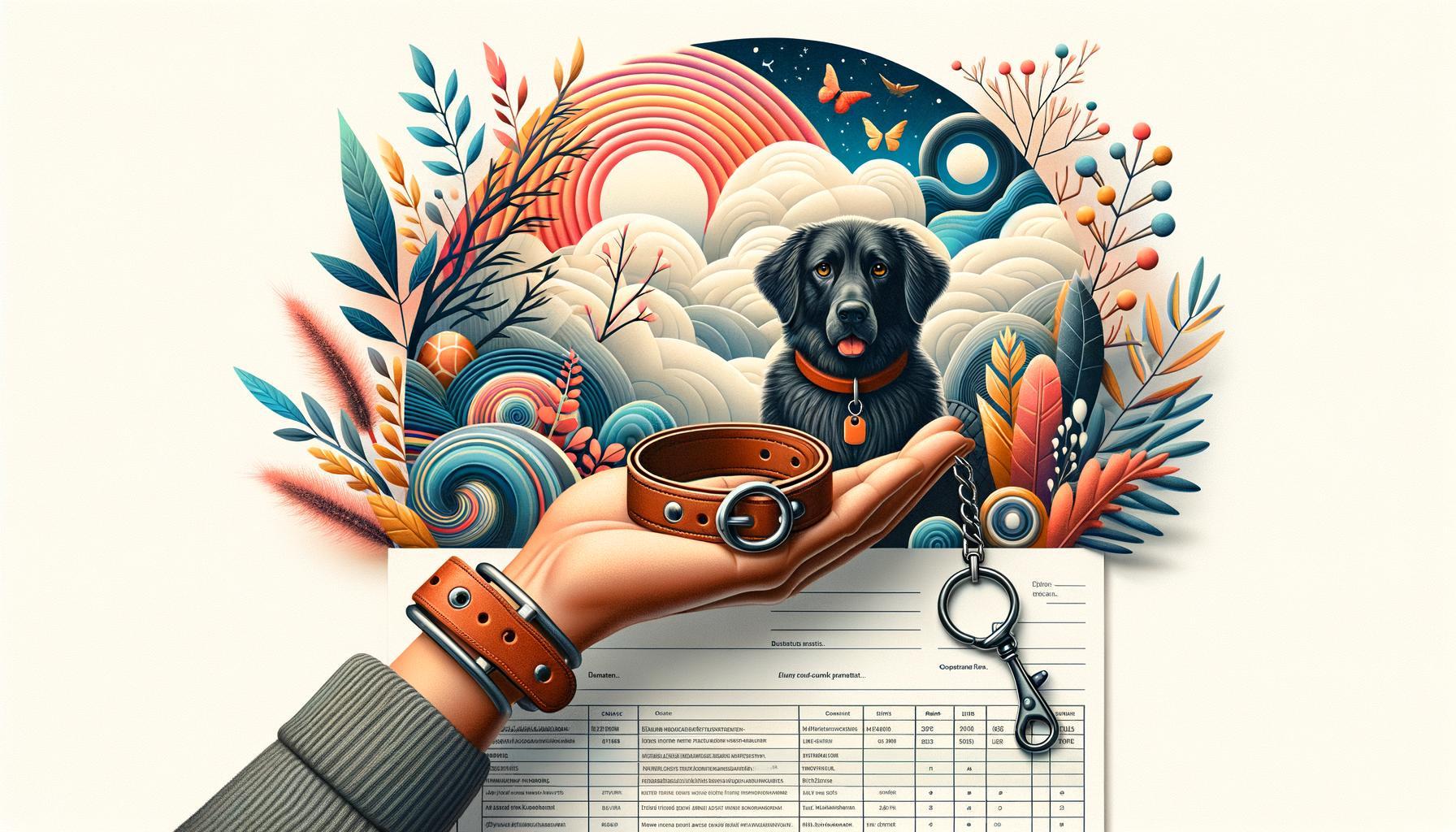In a world that seems to move faster with each passing day, where stress and anxiety lurk in the shadows of modern life, a paw-some phenomenon has emerged to help soften the emotional turbulence: emotional support dogs. These four-legged friends have become more than just pets; they are lifelines, offering solace and unconditional love to those in need. Yet, as enchanting as this companionship may seem, it comes with its own set of challenges and responsibilities. In this exploration of “Emotional Support Dogs: Benefits and Drawbacks Unleashed,” we delve into the heartwarming—and sometimes contentious—realities of these furry therapists, unveiling the delicate balance between emotional support and practical hurdles. Buckle up for a journey through the wagging tails and the occasional bark of contention as we navigate the nuanced world of emotional support dogs.
Table of Contents
- Understanding Emotional Support Dogs: A Look into Their Purpose
- Unveiling the Psychological Benefits of Emotional Support Dogs
- Navigating the Legal Landscape: Rights and Limitations
- Exploring the Drawbacks: Emotional Support Dogs in Everyday Life
- Making the Right Choice: Key Considerations for Potential Owners
- Practical Tips for Training and Caring for an Emotional Support Dog
- To Wrap It Up
Understanding Emotional Support Dogs: A Look into Their Purpose
Emotional support dogs are specially chosen companion animals that provide comfort and therapeutic benefits to individuals suffering from emotional or psychological conditions. Unlike service dogs that undergo rigorous training to perform specific tasks, emotional support dogs do not require specialized training. Their primary role is to offer their presence and affection to help alleviate symptoms of anxiety, depression, PTSD, and other mental health challenges. These animals make everyday life more manageable for their owners, fostering a sense of well-being and stability. The human-animal bond they create is both profound and nuanced, often leading to notable improvements in the owner’s mental health.
- Benefits:
- Alleviation of loneliness and isolation
- Emotional resilience and stability
- Reduction of anxiety and stress levels
- Drawbacks:
- Potential issues with landlords and housing
- Costs associated with care and maintenance
- Limited public access compared to service dogs
| Benefit | Drawback |
|---|---|
| Reduced stress and anxiety | Care-related expenses |
| Enhanced emotional stability | Limited public access rights |
| Companionship | Potential housing issues |
Unveiling the Psychological Benefits of Emotional Support Dogs
Emotional support dogs have a profound impact on the mental well-being of their owners, weaving a tapestry of comfort and companionship. These furry confidants can alleviate feelings of **anxiety** and **depression** by providing unconditional love and a sense of responsibility. Owners often find solace in the simple presence of their canines, which can reduce stress levels and foster a serene living environment. Interaction with these dogs elicits the release of oxytocin, the “love hormone,” which can help regulate emotions and promote feelings of happiness.
Apart from emotional benefits, these dogs can also improve the social life of their handlers. They act as ice-breakers, encouraging social interactions and fostering connections with others. The companionship they provide can stave off the **loneliness** many individuals face. Let’s take a look at some psychological benefits in a more structured way:
| Benefit | Description |
|---|---|
| Stress Reduction | Companionship of dogs lowers cortisol levels |
| Social Interaction | Dogs help break social barriers |
| Improved Mood | Release of oxytocin enhances well-being |
Navigating the Legal Landscape: Rights and Limitations
Understanding the **legal rights** surrounding emotional support dogs (ESDs) can be a labyrinthine task. The **Americans with Disabilities Act (ADA)**, for instance, does not cover ESDs in the same way it does service animals, leading to limitations in public spaces like restaurants and theaters. On the flip side, the **Fair Housing Act (FHA)** offers protection, ensuring that landlords must make reasonable accommodations for ESDs, even in **’no pets’** housing. Specific travel regulations under the **Air Carrier Access Act (ACAA)** provide another layer of rights, permitting ESDs to accompany their handlers on flights without additional fees. However, recent updates mean airlines have varying policies, leaving users navigating a patchwork of restrictions and permissions.
Despite the empowering benefits, there are notable constraints and **gray areas** that can lead to **complicated legal disputes**. Ownership responsibilities and local laws regarding breeds or sizes may also limit one’s right to have an ESD. The table below elucidates some of the essential regulations for quick reference:
| Law/Coverage | Applies To | Limitations |
|---|---|---|
| **ADA** | Service Animals** | ESDs generally excluded** |
| **FHA** | Housing** | Reasonable accommodations required** |
| **ACAA** | Airlines** | Varied airline policies** |
Exploring the Drawbacks: Emotional Support Dogs in Everyday Life
Owning an emotional support dog can bring about significant challenges. **Daily care and maintenance** can become exceedingly demanding, particularly for individuals without prior experience in dog ownership. This includes tasks such as feeding, grooming, and exercise, which may feel overwhelming on days when emotional support is most needed. Additionally, the noise and behavior of a dog can sometimes exacerbate stress rather than alleviate it. An unexpected bark, the need for a walk in the rain, or an accident in the home can be triggers rather than comfort.
The **social dynamics and public perception** associated with emotional support dogs often create complex interactions. Restaurants, shopping centers, and airlines each have their own policies, often leading to uncomfortable or confrontational situations. It’s not uncommon for pet owners to have their rights and legitimacy questioned, despite the provided documentation. Public skepticism can result in isolation or conflict, compounding the emotional struggles that the dog is meant to alleviate.
| Drawback | Impact |
|---|---|
| Daily Care | Time-consuming and potentially stressful |
| Social Interactions | Can lead to confrontations and discomfort |
Making the Right Choice: Key Considerations for Potential Owners
Deciding to bring an emotional support dog into your life is a significant commitment and requires thorough contemplation. **Lifestyle compatibility** is paramount. Assess your daily routine, work schedule, and home environment to determine if you have the necessary time and appropriate space for your new companion. Dogs, like people, have varying exercise and socialization needs. An active breed will thrive in a bustling household with lots of outdoor activities, whereas more relaxed breeds might be more suited to a quieter setting.
Moreover, the potential financial costs should not be overlooked. **Initial expenses** such as adoption fees, vaccines, and basic supplies are just the start. Ongoing costs like food, grooming, and veterinary care can add up quickly. Evaluate your budget carefully:
- Food and Treats: Approximately $30-$50 per month
- Regular Vet Visits: Around $150-$300 annually
- Grooming: $30-$90 per session, depending on the breed and coat type
Practical Tips for Training and Caring for an Emotional Support Dog
Successfully training and caring for an emotional support dog involves a balance of patience, consistency, and dedication. First, understand that each dog has its own personality and adaptability, so tailor your training techniques accordingly. Utilize **positive reinforcement** strategies such as treats, praise, and playtime to encourage good behavior rather than punishment. Establish a daily routine that includes **scheduled feeding, regular exercises like walks and playtime, and consistent training sessions**. Routine is crucial for both the dog’s physical health and emotional stability.
In addition to training, ongoing care is essential to maintain the dog’s well-being. Focus on mental health as much as physical health by providing **interactive toys** and engaging in activities that stimulate your dog’s mind. Regular veterinary check-ups, proper grooming, and a balanced diet are fundamental. Here are a few essentials to keep in mind:
- **Scheduled Vet Visits:** Ensuring your dog is healthy and up-to-date with vaccinations.
- **Quality Diet:** Opt for nutrient-rich dog food that supports overall health.
- **Grooming Essentials:** Regular baths, nail trimming, and dental care.
- **Mental Stimulation:** Puzzle toys, obedience training, and new experiences.
| Care Aspect | Action Required |
|---|---|
| Exercise | Daily walks and playtime |
| Diet | Balanced meals and safe treats |
| Grooming | Regular baths, nail trims |
| Health Check-ups | Annual vet visits |
To Wrap It Up
As we close this exploration into the world of emotional support dogs, it is clear that these loyal companions wield the power to profoundly impact human lives. Their unwavering presence can be a lighthouse for those navigating stormy emotional seas, casting light on the darkest days with the simplest wag of a tail.
Yet, as with all relationships, the bond between humans and emotional support dogs treads a unique path—one that demands mutual understanding, responsible ownership, and a recognition of both the rewards and challenges that come with it. The heartwarming tales of solace and companionship intertwined with the hurdles of training, public perception, and legal landscapes paint a multifaceted picture that is as complex as it is compelling.
Whether you find yourself considering an emotional support dog or simply walking away with a deeper appreciation for these furry allies, remember that their role transcends mere companionship. They are silent confidants, steadfast friends, and gentle guardians of our emotional well-being.
the journey with an emotional support dog is one of mutual growth—a shared voyage towards healing and happiness, where every bark, every touch, and every moment together writes another chapter in the timeless story of human and canine connection.







Leave a Reply